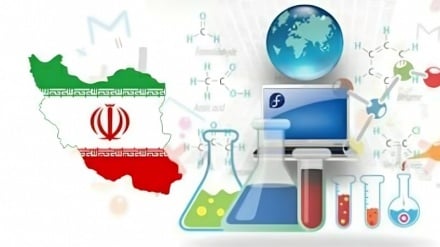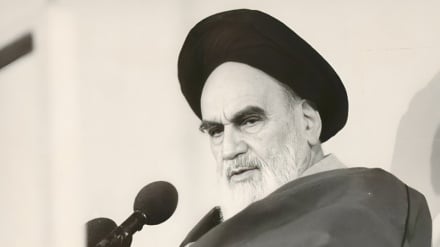Maximum pressure yields economic prosperity for Iran
The US policy of economic terrorism against the Islamic Republic is actually a blessing in disguise for the country as is evident by development and flourishing of various domestic industries that greatly reduces dependence on foreigners and saves billions of dollars in hard currency.
Here’s an article in this regard on the ‘LobeLog’, titled: “Maximum Pressure Yields Economic Prosperity for Iran”. The writer is Karim Sharara, a Lebanese PhD student who has lived in Iran since 2013 studying political science at the University of Tehran with a focus on Iranian affairs.
The former Egyptian diplomat Mohammad al-Baradei, who during his tenure as Director General of the Vienna-based International Atomic Energy Agency (IAEA), time and again verified the peaceful nature of Iran’s nuclear programme, has said: “People talk about smart sanctions and crippling sanctions. I’ve never seen smart sanctions, and crippling sanctions cripple everyone, including innocent civilians, and make the government more popular.”
All this talk of Iran thriving under sanctions may appear to the ill-informed US that politicians in the Islamic Republic are trying to save face.
However, ask any political analyst with an understanding of Iranian policymaking, and they will tell you that throughout its history, Iran has not chosen to secure its interests over saving face. So, when you hear Iranian Foreign Minister Mohammad Javad Zarif saying that “Iran will thrive despite US sanctions”, you have to take serious note of the developments in Iran.
Well the thing is (and this may be surprising to many), imposing sanctions against a country does not necessarily signal impending doom. Yes, it does spell hardship for the people, especially in the short term, but nothing that would necessarily impede long-term growth or even development. Sanctioning Iran may in fact allow it an opportunity to implement economic reforms in order to better achieve self-sufficiency.
Allow me to explain.
Iran has been under sanctions since 1979. The sanctions against Iran were eased when the JCPOA (Joint Comprehensive Plan Of Action) was signed in 2015 until Trump decided to reinstate them in 2018. The sanctions affect Iranian oil sales and international trade, and they also impact, among other things, the sale of cars and car parts to Iran and the sale of commercial passenger aircraft to Iran. The outcome makes peoples’ lives rather difficult, and even endangers them, all while the United States asserts that its sanctions are directed against the state, not the Iranian people.
Right after the victory of the Islamic Revolution, Iran had to contend with an imposed war with Iraq that put a heavy toll on its economy, with close to 60-70% of its economy devoted to the war effort. This naturally resulted in an uneasy, unstable economy throughout the 8-year holy defense, one that was heavily reliant on oil revenue and sensitive to global oil prices, in accordance with which Iran’s real GDP would fluctuate.
The war period doesn’t reveal anything special other than the fact that Iran’s economy is heavily reliant on oil exports. Shifting our attention to the post-war period, however, one can begin to see a trend.
Ayatollah Akbar Hashemi Rafsanjani was Iran’s first post-war president, serving from 1989 to 1997. His was the reconstruction period, wherein Iran shifted its focus from a war economy to internal production.
Being sanctioned for so long has actually taught Iranians that reliance on the West will not yield economic prosperity. Only through the development of its internal capabilities will Iran be able to achieve self-sufficiency and stability. Indeed, the statistics show that since the victory of the Islamic Revolution, the poor and lower middle class has actually decreased as a share of Iran’s population, while the middle class has grown larger.
In 1972, the poor accounted for 40% of the population, whereas by 2015 they accounted for less than 10%, while the proportion of those reaching middle-class status grew to 60%. Moreover, not only have sanctions been historically ineffective in this regard, they have also had no effect on employment, as the Iranian unemployment rate did not fluctuate in accordance with sanctions imposition or removal from 2008-2018. Recent figures show that Iran’s unemployment rate decreased by 1.3% from March 21st to June 21st of this year, suggesting that sanctions are still not impacting employment.
Under President Hassan Rouhani’s administration, things became a bit fickle. During this time, Iran became less reliant on oil sales, making sanctions targeting oil exports less relevant. Rouhani’s biggest achievement by far was the 2015 nuclear deal (JCPOA), and although it helped ease restrictions on Iranian exports, it also opened the doors towards easier imports, thereby damaging Iranian industries.
Matters were made difficult by devaluation of the Rial and cut back on Iranian industries’ ability to purchase raw materials.
The importance of the industrial sector lies in the fact that it is Iran’s way out of the recession. Iran’s technology sector in particular has made great strides in the absence of competition, with startups thriving under sanctions. In fact, the Leader of the Islamic Revolution, Ayatollah Seyyed Ali Khamenei, has, over the last 8 years, stressed resolving economic matters through what he calls a “Resistance Economy”, and has for the last three years placed special emphasis on supporting local industries, production and goods.
Through the “Resistance Economy,” Iran has learned to transform threats (such as economic sanctions) into opportunities. An example is the recent strengthening of the Rial despite further restrictions placed on it by the US following the downing of the most sophisticated radar-evading US drone in the Strait of Hormuz. This was made possible because of sound economic policies of the Central Bank of Iran.
The products of this growing “Resistance Economy” are many. For one, the US Global Hawk was downed by a domestically produced Raad SAM. The Iranian Ministry of Defense also introduced an Iranian fighter jet, Kowsar, last year, which is based on the F-5 and is completely domestically manufactured.
Additional examples of the development of domestic production despite hardships and sanctions are many. In order to help victims still suffering from the floods that had struck Iran in March 2019, the Executive Headquarters of the Imam Khomeini Relief Committee placed an order for 10,000 refrigerators of a then-defunct Iranian brand, effectively reviving that brand, its factory, and its production lines, providing employment for hundreds of people and material aid for the flood victims. It also insured 14,000 rural homes in Khuzestan province before the floods hit, providing distraught families with new equipment for their houses, and replacing almost half of the province’s cattle so that people would not end up jobless. This is an example of how Iranians are reviving their own industries and securing their own interests in times of hardship.
A few months ago, students from Amir Kabir University announced that, due to sanctions that made it impossible to import TBM tunnelers, they were in the process of reverse engineering the tunnelers they already had in order to manufacture them domestically.
Yet another example concerns medicines, which—although not officially under sanction—have become increasingly difficult to import. This has prompted Iranian companies to begin producing hard-to-obtain or imported drugs domestically. One such case is that of Penicillin G, of which Iran is the only manufacturer in the West Asia-North Africa region. In the same field, the Barakat Pharmaceutical Industrial Town was opened a year ago, providing direct employment to close to 7,000 individuals and indirect employment to roughly 30,000 more, all in an effort to manufacture hard-to-obtain drugs for the Iranian populace.
Of course, this is not to say that nothing in Iran has changed since the sanctions were renewed. Iran is at present not self-sufficient in all fields, and its economy is still reliant on oil sales (though not to the extent it was under previous administrations). The impact of the sanctions can be seen in the dip in Iran’s GDP post-renewal. The sanctions have presented Iran with many difficulties in terms of importing needed technology as well as other essential products. President Rouhani has compared the impact of the sanctions to the hardships created by the eight-year Iraqi imposed war of the 1980s.
At the same time, however, it’s important to note that Iran is managing to side-step some of the sanctions affecting its exports (although to what degree is up for debate, since these sales are secret).
Iran definitely has no way to go from here except to strengthen its local industries and domestic talents in an effort to undermine the sanctions. This seems to be the course it has chosen to tread, as evidenced in statements by a number of figures. With less reliance on oil sales (with Iran planning to completely end its dependence on oil) and increased reliance on domestic production (thus creating employment), Iran should fare much better in the coming years.
As is evident by Ayatollah Khamenei’s statements and the achievements of local industry, it is that Iran has gradually become more self-reliant over years of sanctions. Despite the current hardships, the renewed sanctions regime offers a renewed opportunity for Iran to accelerate that trend.
Of course, with tensions rising in the Persian Gulf, and Donald Trump having exhausted all his options short of war without achieving his intended result, one has to wait and see how things come to pass.
AS/EA


